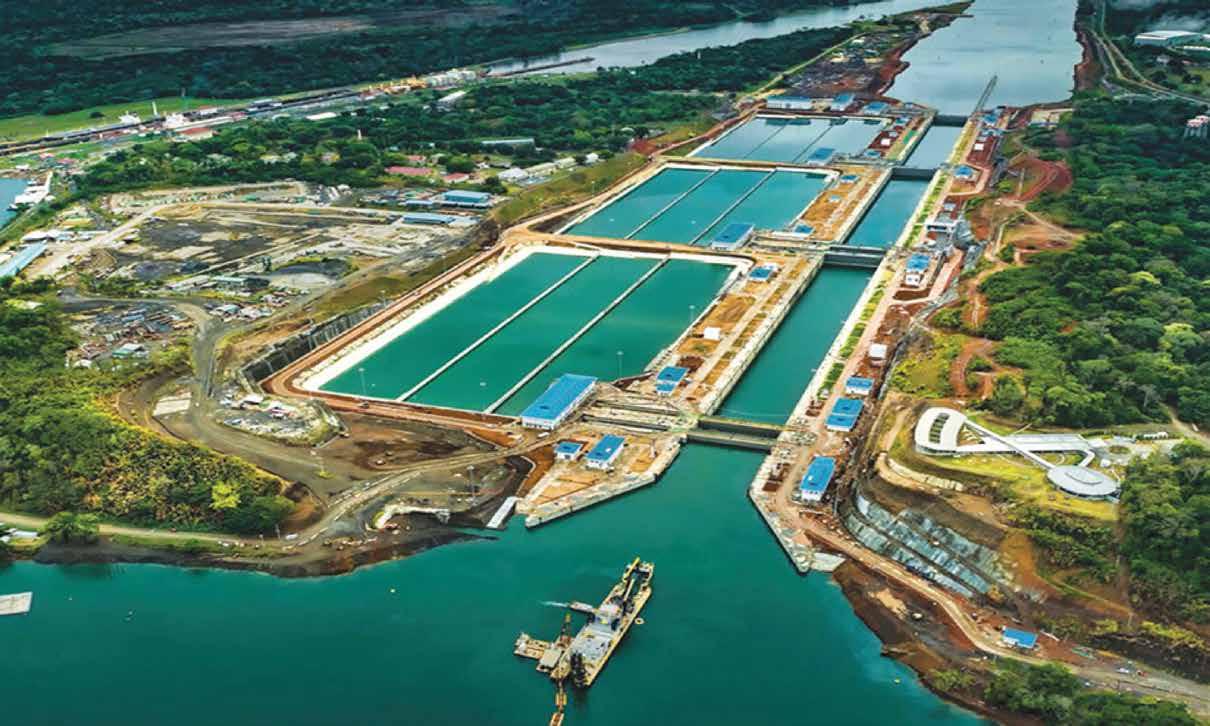
6 minute read
C. RELATIONSHIP OVERVIEW BETWEEN PANAMA AND US
C. Relationship Overview
Between Panama and US
Advertisement
Solarisys / Shutterstock.com
The Trade Promotion Agreement (TPA) between USA and Panama was the product of negotiations that concluded on December 19th, 2006. On March 30th, 2007 President Bush noti ed the US Congress of the intention to make a trade agreement with Panama. After a long process of investigation and negotiations, the U.S. Congress approved the agreement. Panama and the USA signed the Trade Promotion Agreement on June 28th, 2007. Panama’s National Assembly approved the Agreement on July 11th, 2007, but the U.S. Congress approval lingered until 2011. The Trade Promotion Agreement with Panama was signed into law on October 21st, 2011 and entered into force in both countries on October 31st, 2012.
Panama sought the TPA in order to make trade rules with the United States permanent, and perhaps more signi cantly, to promote foreign investment in the country. The United States has stressed that the TPA with Panama, in addition to enhancing trade by giving the United States greater access to Panama’s growing market, would also provide greater access to Panama’s large service sector. According to U.S. of cials, Panama’s strategic location as a major shipping route (with about 10% of U.S. international trade passing through the Canal), enhances the signi cance of the TPA for the United States.
The TPA established a bilateral free trade area that eliminates tariffs on most goods which satisfy the Agreement’s rules of origin. There are speci c provisions in the Agreement on customs administration and trade facilitation, which would simplify the bilateral trade of goods. The TPA also liberalizes cross-border trade in virtually all services, with speci c chapters focused on nancial and telecommunication services. It builds upon existing WTO agreements, as well as other agreements and international commitments, by strengthening the rules that govern investment, intellectual property rights, labor, the environment, and government procurement. U.S. rms will have better access to Panama's service sector, compared to those that Panama provides to the other WTO members under the GATS (The General Agreement on Trade in Services). All service sectors are covered under the TPA, except where Panama has made speci c exceptions. Moreover, Panama agreed to become a full participant in the WTO Information Technology Agreement.
The TPA changes rules for U.S. exporters to Panama. More than 99% of Panama’s agricultural exports enter the U.S. market duty-free, and approximately 40% of U.S. agricultural exports enjoy duty-free access to the Panamanian market. The TPA eliminates duties on half of U.S. farm exports, including on high-quality beef, frozen turkeys, sorghum, soybeans, soybean meal, crude soybean and corn oil, almost all fruit products and tree nuts, wheat, most peanuts, whey, cotton, and many processed products. It also eliminates nearly all of remaining tariffs on U.S. farm exports within 15 years and it immediately provides duty-free access through Tariff Rate Quotas (TRQs) for speci c volumes of standard grade beef, chicken leg quarters, pork, corn, rice, and dairy products.
Over 87% of U.S. exports of consumer and industrial products to Panama become duty-free immediately, with remaining tariffs phased out over a period of ten years. U.S. products which gained immediate duty-free access include information technology equipment, agricultural and construction equipment, aircraft and replacement parts, medical and scienti c equipment, environmental products, pharmaceuticals, fertilizers, and agro-chemicals.
In addition to the favorable market access provisions, the Agreement resolves signi cant sanitary and technical issues. Panama, for example, will recognize the meat inspection system of the United States as equivalent to its meat inspection system.
Due to the small size of the Panamanian economy the impact of U.S. Goods Exports to Panama will be signi cant. However, since Panama has had a traditional service market-oriented economy; chapter 11 of the TPA means a tremendous window of opportunity for Panamanians wishing to export this type of services to the U.S market.

The Agreement also established a bilateral Free Trade Commission to supervise the implementation and the work of all committees and working groups established under the Agreemnt. Furthermore, there are numerous provisions throughout the Agreement that promote bilateral consultation and cooperation, procedural and substantive due processes, administrative and judicial review, transparency, and the rule of law. Finally, the TPA contains a transitional safeguard measure and a mechanism for settling disputes.
According to the statistics of the General Comptroller´s Of ce, in 2016 Panama imported US$3,084 million from the USA, which represents 24% of the total imports of the country.

Petroleum oils & oils obtained from bituminous
minerals (excluding crude) – In 2017, the United States, exported US$2,373,265,000 to Panama.
Corn – In 2017, the United States exported around US$82.5 million in corn to Panama, without counting seeds. The Agreement provides immediate duty-free access for a speci c volume of U.S. corn through a 298,700 metric ton TRQ, with 3% compound annual growth. Panama will phase-out the out-of-quota tariff of 40% over 10 years with tariff reductions beginning after 5 years.
Oil cake & other solid residues – In 2017, the United States exported over US$72 million to Panama, from extraction of soybean oil. The Agreement locks in duty-free treatment for U.S. soybeans, soybean derivatives and crude soybean oil. Panama will phase-out the 20% tariff on crude soybean oil over 15 years beginning after 5 years. Wheat – In 2017, the United States exported approximately US$31 million in wheat to Panama. The Agreement locks in duty-free for U.S. wheat.
Rice – In 2017, the United States exported over US$14.4 million in rice to Panama. The Agreement provides immediate duty-free access for a speci c volume of rice through two TRQs totaling 12,190 metric tons, with 6% compound annual growth. Panama will phase-out the out-of-quota tariff of 90% over 20 years beginning after 10 years.
Horticulture and horticultural products – Panama’s tariffs on these products range from zero to 81%. Under the Agreement, Panama will provide immediate duty-free access on nearly 80% of these products. With a few exceptions, Panama will phase-out tariffs on most of the remaining products over 5 years.
Telephones and portable automatic data
processing machines – In 2017, the United States exported to Panama over US$110 million in telephones for cellular networks, central processing units, keyboards and displays. Agricultural goods – face an average tariff of 15%, with some tariffs as high as 260%, because there is a high governmental protection over some local productions.
Vehicles – In 2017, the USA exported to Panama approximately US$123 million in vehicles. Poultry meat – In 2017, USA exported approximately US$24.5 million worth of poultry to Panama.
Food preparations – In 2017, the United States exported over US$44 million in food preparations to Panama. Industrial goods – currently face an average tariff of 7% in Panama, with some tariffs as high as 81%.
The previously statistics were compiled from the Trade Map database of the International Trade Center, the joint agency of the World Trade Organization and the United Nations.
Some of the most relevant aspects of the Trade in Services sections are:
Telecommunication services: This chapter regulates the access and use of public telecommunication services, covers obligations regarding public services providers and independent regulatory organisms, submarine cables systems and conditions relating to the supply of information services. Based on the actions agreed under the TPA, the parties will have a non-discriminatory access to networks and essential resources. It is worth mentioning that mobile services have been excluded from some sections of the chapter. Professional services: The professional services provisions will contribute to increased market access and national treatment for U.S. professional services, practitioners engaged in cross-border trade, especially in such services historically reserved for Panamanian nationals. Certain professional services should bene t from a process whereby agreements on mutual recognition could be accomplished over time, such as in Engineering.
Retail services: Retail service provisions will improve conditions of market access and national treatment. Financial services: The nancial services provisions will lead to increased penetration of the Panamanian market by U.S. rms.







